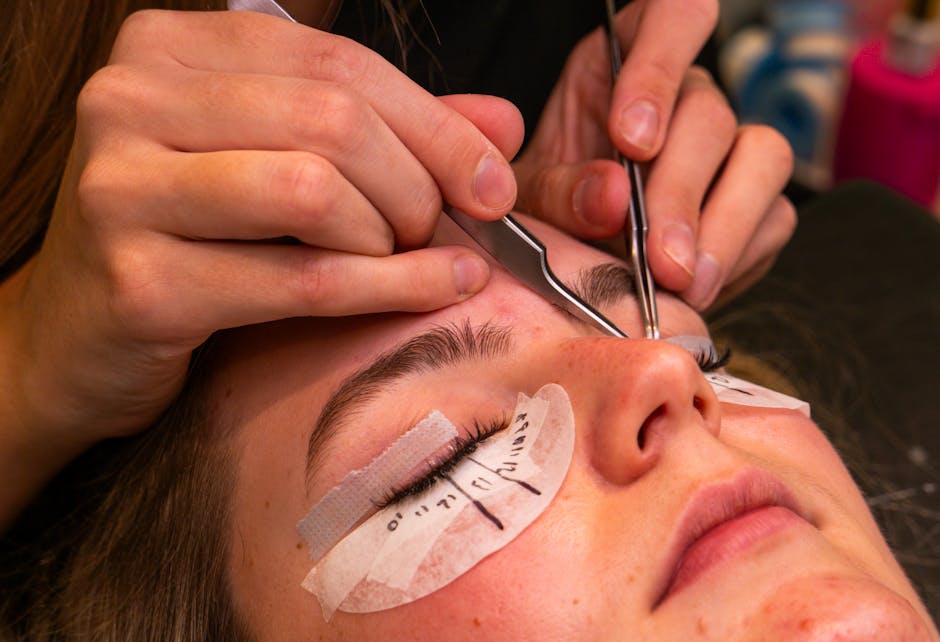Eye Care for Computer Users: Tips
Did you know that about 70% of people experience eye strain from using computers? that’s a staggering number, and it’s only increasing as we spend more time in front of screens. If you’re like most people, you want to keep your eyes healthy while working or playing on your computer. Lets explore some practical tips to protect your vision.
Why is Eye Care Important for Computer Users?

Your eyes work hard when you’re using a computer. Staring at a screen can lead to discomfort and even long-term issues. Eye strain, dry eyes, and headaches are just a few symptoms of excessive screen time. Taking care of your eyes is crucial to maintain comfort and productivity. So, how do we do that?
What is Computer Vision Syndrome?

Computer Vision Syndrome (CVS) is a term many may not know but should. It refers to a group of eye and vision-related problems that result from prolonged computer use. Symptoms include:
- Eye strain
- Dry eyes
- Blurred vision
- Headaches
- Neck and shoulder pain
Understanding CVS helps you recognize the importance of eye care. Fortunately, there are simple ways to ease these issues.
How Can You Reduce Eye Strain?

Here are some effective strategies to minimize eye strain while you’re working on your computer:
- Follow the 20-20-20 Rule: Every 20 minutes, take a 20-second break to look at something 20 feet away. This helps relax your eye muscles.
- Adjust Your Screen Settings: Ensure your screen brightness matches the level of your surroundings. A dim screen in a bright room can cause strain.
- Keep Your Screen Clean: Dust and fingerprints can reduce clarity. Wipe your screen regularly for better visibility.
Implementing these tips can greatly reduce your eye fatigue. But, there’s more to consider!
What Should Your Workspace Look Like?

Your workspace can significantly affect your eye health. Here are some aspects to check:
- Screen Position: Your screen should be about an arm’s length away. The top of the screen should be at or just below eye level.
- Lighting: Avoid glare from windows and overhead lights. Consider using a desk lamp with a soft light.
- Chair and Desk Height: Ensure your chair and desk are at the correct height to promote good posture.
A well-organized workspace can help keep your eyes comfortable and reduce strain. Speaking of comfort, lets talk about hydration.
Why is Hydration Important for Eye Health?
Staying hydrated is vital for overall health, and your eyes are no exception. When you’re dehydrated, your body produces fewer tears, leading to dry eyes. Aim to drink enough water throughout the day.
Here are a few tips to stay hydrated:
- Keep a water bottle on your desk.
- Set reminders to drink water every hour.
- Include hydrating foods like cucumbers and oranges in your diet.
By keeping hydrated, you can help maintain moisture in your eyes, reducing discomfort.
What About Eye Exercises?
Eye exercises can also play a role in reducing eye strain. Here are some simple exercises you can try:
- Palming: Rub your hands together to create warmth. Then, gently cup your palms over your closed eyes for a minute.
- Focus Change: Hold a finger a few inches from your nose. Focus on your finger, then look at something far away. Repeat several times.
- Eye Rolls: Slowly roll your eyes in a circular motion. Do this in both directions for a few minutes.
Practicing these exercises can help relax your eyes and improve focus. But what about protective measures?
Should You Wear Blue Light Glasses?
Blue light glasses have gained popularity, especially among computer users. They help filter out blue light emitted by screens. Studies suggest that blue light can disrupt sleep patterns and cause eye strain.
Heres when to consider wearing them:
- If you work long hours in front of a screen.
- If you experience symptoms of eye strain regularly.
- If you struggle with sleep after using screens at night.
While blue light glasses can help, they are not a cure-all. Combine them with other eye care practices for the best results.
What About Regular Eye Exams?
Even with good care, regular eye exams are essential. An eye doctor can spot issues early and suggest corrective measures. The American Optometric Association recommends an eye exam every two years for adults, or more frequently if you have existing vision problems.
During an exam, your doctor can check for:
- Refractive errors (like nearsightedness or farsightedness)
- Signs of eye diseases
- Overall eye health
don’t skip these important visits. They can help protect your vision for years to come.
What Are Some Common Misconceptions About Eye Care?
There are many myths about eye care, especially regarding computer use. Lets clear a few up:
- Myth 1: Sitting too close to the screen will ruin your eyesight. Fact: While it can cause strain, it doesnt cause permanent damage.
- Myth 2: You only need to see an eye doctor if you have poor vision. Fact: Regular check-ups are essential even if you see well.
- Myth 3: Wearing glasses all the time will weaken your eyes. Fact: Glasses help you see better and don’t weaken your eyes.
Understanding these misconceptions can help you stay informed and proactive about your eye health.
What Are the Key Takeaways for Eye Care?
Keeping your eyes healthy while using computers doesn’t have to be complicated. Here are the most important tips to remember:
- Take regular breaks using the 20-20-20 rule.
- Maintain good workspace ergonomics.
- Stay hydrated and incorporate eye exercises into your routine.
- Consider blue light glasses if you spend long hours in front of screens.
- Schedule regular eye exams for monitoring your eye health.
By following these tips, you can significantly reduce eye strain and protect your vision in our screen-filled world. Your eyes will thank you!
For more information on eye health, check out the American Academy of Ophthalmology. You can also read about maintaining a healthy lifestyle for better eyesight in our related post, Healthy Lifestyle Tips for Eye Health.



